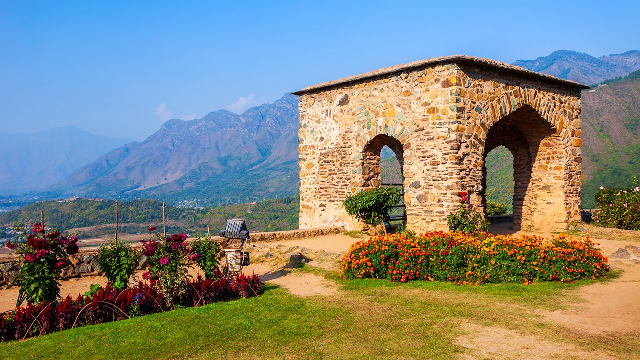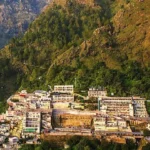Table of Contents
Toggle- Overview
- The Origins and Historical Background of Pari Mahal
- Architecture of Pari Mahal: Persian-Mughal Mix
- Cultural and Spiritual Improvements of Pari Mahal
- Why Pari Mahal is a Must-Visit Destination in Srinagar
- Best Time to Visit Pari Mahal
- Places to be Checked When in Srinagar
- Conclusion: Pari Mahal, A Timeless Masterpiece
- How to book Pari Mahal tour online?
- People Also Ask
- What is Pari Mahal?
- Who built Pari Mahal?
- Why is Pari Mahal called the ‘Palace of Fairies’?
- Where is Pari Mahal located?
- What architectural style is used in Pari Mahal?
- Is Pari Mahal open to tourists?
- What is the history behind Pari Mahal?
- How can I reach Pari Mahal?
- What is the significance of Pari Mahal?
- Can I take photos at Pari Mahal?
- What are the opening hours of Pari Mahal?
- What is the best time to visit Pari Mahal?
- Is there an entry fee for Pari Mahal?
- What other attractions are near Pari Mahal?
- What can I see inside Pari Mahal?
- Is Pari Mahal associated with any legends?
- How long does it take to explore Pari Mahal?
- Is Pari Mahal a UNESCO World Heritage site?
- Can I visit Pari Mahal in winter?
- What makes Pari Mahal different from other Mughal buildings?
- Was Pari Mahal used for anything other than a palace?
- How long did it take to build Pari Mahal?
- Is there any restoration work happening at Pari Mahal?
- Are there any nearby hotels or accommodations?
- What is the cultural importance of Pari Mahal in Kashmiri heritage?
- Inquiry Form
Overview
Srinagar has somehow epitomized the site where beauty is soaring high with serenity and natural beauty. It is home to some of the world’s most incredible Mughal gardens. In the several mind-boggling landmarks in the region, Pari Mahal Garden defines the essence of Mughal architecture along with Persian influences. Pari Mahal, which is often called the “Palace of Fairies,” is a historically important monument and one of the most fascinating examples of Mughal grandeur, located on the western edge of Dal Lake. This blog goes deeper into the fascinating history, architecture, cultural significance, and the reasons why Pari Mahal remains a must-visit destination for anyone traveling to Srinagar.
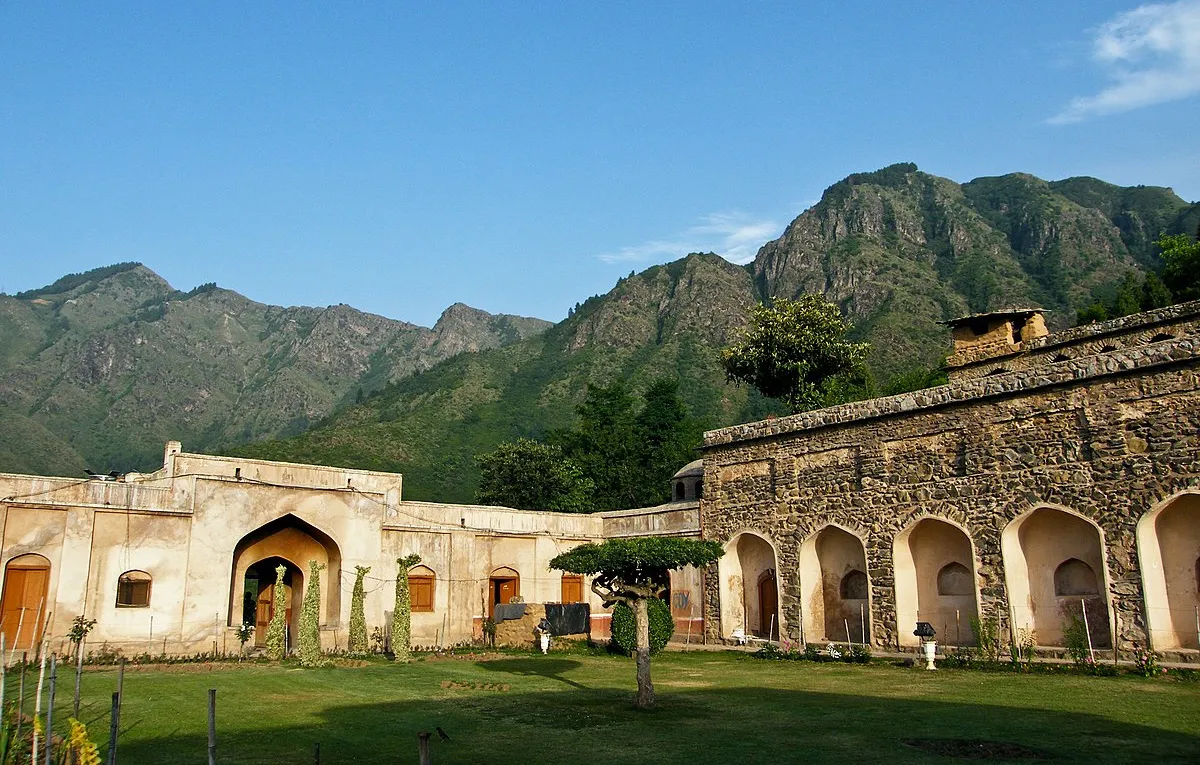
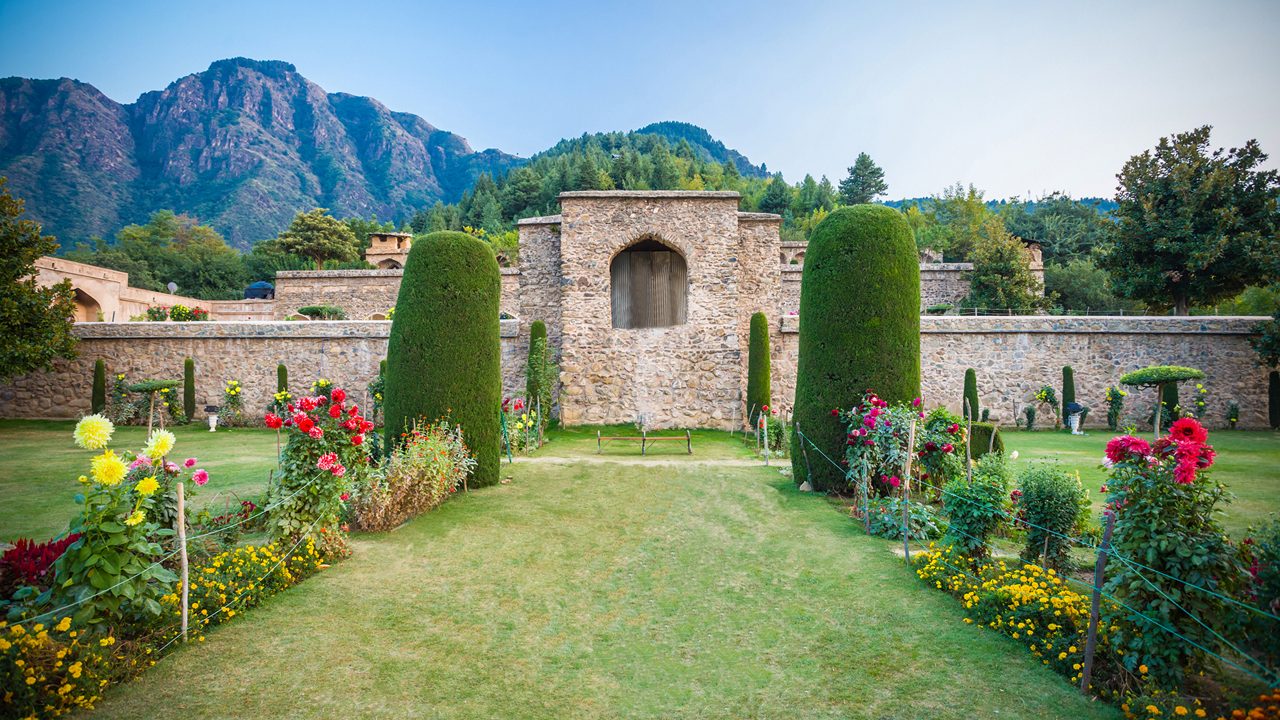
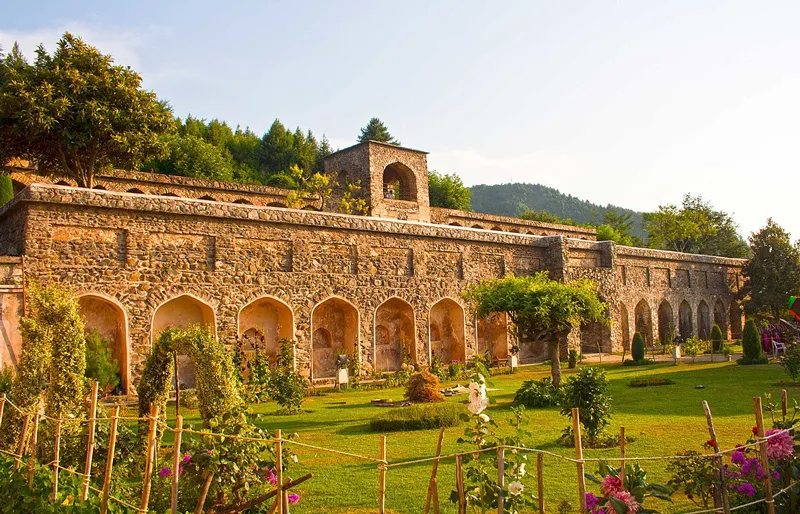
The Origins and Historical Background of Pari Mahal
Pari Mahal, built during the Mughal period, was commissioned by Dara Shikoh, the eldest son of the Mughal Emperor Shah Jahan, in the 17th century. Dara Shikoh, known for his intellectual pursuits and love for Persian aesthetics, envisioned Pari Mahal not only as a symbol of the empire’s grandeur but also as a cultural and intellectual hub. Little is known about the exact date of its construction, but it is surmised that it might have been constructed between 1640 and 1650.
Dara Shikoh’s Vision for Pari Mahal
Dara Shikoh was highly inspired by Persian culture and philosophy while designing Pari Mahal. It was to establish an architectural-nature-spirituality harmony in the garden and palace structure. A scholar who had advocated peace and mutual understanding across several religious communities, Pari Mahal was a reflection of this ideal. According to report, he spent much time at the Mahal pondering issues of spirituality, art, and science.
After the tragic execution of Dara Shikoh by his own brother, Aurangzeb, in 1659, Pari Mahal became abandoned, and this grand monument slowly started to decay. The gardens were not maintained either, but the charm of the palace and its environment did not fade away. It awaited rediscovery by visitors centuries later.
Architecture of Pari Mahal: Persian-Mughal Mix
The architecture of Pari Mahal is a witness to the assimilation of principles of Persian and Mughal design. In other words, it is an integration of the Persian garden along with Islamic architecture and Mughal aesthetics under one monumental building.
Geometrical Layout with Mughal Garden Design
The layout of Pari Mahal is traditionally a Chahar Bagh design of Mughal Garden. It is made up of four quadrants divided by water channels representing the heaven’s garden of an idealized version of paradise. The garden has a series of geometrically arranged flower beds and lawns with water fountains to symbolize the flowing rivers of paradise. Owing to their beauty, the irrigation channels are giving water supply to the trees and plants inside the garden for agricultural purposes.
These water attractions to the garden are integral to the overall outlook of the garden, as they add life to the landscape and bring a balance between architecture and nature. The water channelling on Pari Mahal’s garden is beautifully terraced and forms a vital part of the aesthetic experience. The palace above Dal Lake gives a serene reflection of the great building in the clear waters.
Mughal Architectural Features
The structure stands at the very top of the garden on a raised platform offering panoramic views of Dal Lake and the mountains in the backdrop. The architectural form of the palace features arched windows, intricately carved stone, and rich frescoes in the characteristic style of Mughal craftsmanship. The use of local sandstone gives it a warm, reddish glow, which goes amazingly well with the natural background.
The building comprises a central square rectangular structure, which has two floors. The top floor must have been used for private parties as it is capable of serving such a purpose. The bottom floor was an open-air balcony from where one could see the garden and the lake. The top floor has a flat roof that offers an absolutely unobstructed view of the panoramic landscape as well as perfect viewing post for the sunset and sunrise.
Architectural Innovation
While the garden adheres to the traditional style of Mughal design, the innovation that Pari Mahal can be seen in its architectural elements: the palace. The most salient feature here is the assimilation of Persian architectural motifs and Mughal elements into each other, producing a synthesis not only aesthetically pleasing but also symbolically significant. The palace’s carved ornamentation, arched carvings, and monumental façade reflect the advanced architectural techniques of the period, giving an insight into the grandeur of Mughal royal life.
The Water System and Symbolism of Flowing Water
Among the many great attractions of Pari Mahal Garden, one can consider its well-developed water system. Water channels, fountains, and pools are part of the landscape and architecture. These features both enhance the beauty of the place and serve symbolic purposes for spirituality.
Water Symbolizing Paradise
Water is one of the frequently recurring themes in Islamic architecture that symbolizes rivers in paradise. It stands for life, purity, and plenty. The four quadrants of the garden are separated by flowing water channels, which have been created so that the water channels can be both aesthetic and functional. The gentle voice of water coupled with the luscious greens of the gardens presents a soothing environment and draws the visitor into meditating and contemplating the deeper meaning of water in the Islamic religion.
Fountains and Pools
Fountains and water basins are placed strategically all over the garden, infusing it with grandeur. The beauty of these water features is profound, and their sound adds another dimension to tranquility. The design of this garden further enhances the unity with nature concept, thereby bringing about the proper flow of water through the garden in an orderly manner so that it creates an enhanced peaceful environment around the palace.
Cultural and Spiritual Improvements of Pari Mahal
Cultural and spiritual significance of Pari Mahal goes beyond the scope of architectural beauty and historical supremacy of Srinagar. The essence of its design manifests the Mughal and Persian concept of a garden being a microcosm of paradise on earth. This garden and palace were a sanctuary meant for spiritual contemplation, intellectual pursuits, and aesthetic experiences.
Symbolism of Light, Water, and Nature
Light and water symbolize divine qualities in the Islamic gardens. The design of natural light use in Pari Mahal is so well conceived that with flowing water, it creates harmony between the built structure and nature. Open spaces, terraces, and gardens provide light in all directions for the building and thus create a sense of serenity and peace. The nature, architecture, and light create an elevated spirituality for the palace and garden; thus, a sacred place indeed for visitors to step into.
Intellectual and Cultural Hub
Pari Mahal was a place not only for a palace but also as a center of intellectual and cultural activities at the time of Dara Shikoh. Scholars, poets, and artists would come here to discuss ideas, philosophy, and the arts. Dara Shikoh’s interest in Persian literature and pursuit of knowledge brought many influential thinkers to the palace, and this environment fostered discussions that went beyond the realms of religion, philosophy, and culture.
Why Pari Mahal is a Must-Visit Destination in Srinagar
Pari Mahal is an experience that no visitor to Srinagar can miss. Its blend of history, architecture, and spirituality makes it one of the most significant cultural landmarks in the region. Here are some reasons why Pari Mahal should be on every visitor’s itinerary:
Scenic Beauty and Panoramic Views
Pari Mahal is situated on the hillside, and here, it offers one of the finest views of Dal Lake, the Himalayan mountains, and Srinagar city. The location is quite perfect for photography and sightseeing since the natural surroundings are very beautiful. The palace itself forms an excellent background for the calm lake with houseboats floating. The environment is peaceful and quiet.
The tranquil ambiance of the garden and palace is one of its most alluring features. Surrounded by lush greenery, with the sound of running water and the fresh mountain air, Pari Mahal offers a peaceful retreat away from the hustle and bustle of city life. Whether you’re interested in photography, meditation, or simply enjoying the serene environment, Pari Mahal offers a perfect sanctuary.
Rich Historical Heritage
The historical value makes the visit all the more interesting. The palace holds special importance since it is linked to one of the most interesting figures in the Mughal period: Dara Shikoh. It is a place of rich cultural and historical heritage, where a lot has been offered for reflection regarding the glory of the Mughal Empire and the intellectual legacy that Dara Shikoh has left behind.
A Compelling Architectural Experience
Pari Mahal is one of the very few places where the Mughal and Persian styles of architecture converge. The technical and artistic perfection of the stonework, arched windows, and elaborative frescoes epitomizes the Mughal period. The cultural exchange of both traditions is better understood through these two architectural practices.
Best Time to Visit Pari Mahal
The best time to visit Pari Mahal would be spring and summer. The garden should be in bloom, and it is warm; this period lies between March to October. While the spring flowers are blooming, the place is alive and colorful. Summers bring clear weather and warm conditions, ideal for sightseeing. Autumn months are also unforgettable with the leaf change colors. Such a natural phenomenon adds a different meaning to beauty in landscape, September to November.
Places to be Checked When in Srinagar
During visiting Pari Mahal, one must not miss other equally iconic places, some of which are:
1.Dal Lake: Made popular for houseboats and riding a Shikara, Dal Lake is an unmissable experience.
2.Shankaracharya Temple: Located on a hilltop, this temple provides panoramic views of Srinagar and the surrounding valleys.
3.Mughal Gardens: One can also visit Nishat Bagh, Shalimar Bagh, and Chashme Shahi other beautiful Mughal gardens in Srinagar
4.Hazratbal Shrine: A beautiful Muslim shrine, it provides a peaceful ambience with the beauty of Dal Lake
Conclusion: Pari Mahal, A Timeless Masterpiece
Pari Mahal is not just a garden or a palace. It is a lively testimony to the grandeur and brilliance of the Mughal period. The seamless integration of nature, architecture, and spirituality has made it a timeless masterpiece. Be it history enthusiast or an architecture lover or someone seeking a peaceful retreat to get away from it all, Pari Mahal has something for all. A visit to this grand monument allows one to take a dip into the cultural heritage of Kashmir, whose aesthetic beauty and architectural excellence with wisdom are still alive in it.
Pari Mahal has remained one of Srinagar’s most loved monuments because of Mughal architecture, Persian designs, and religious symbolism, it offers the tourist an experience different from the other monuments.
How to book Pari Mahal tour online?
Contact Brown Chinar at +91 6005039532/+91 9906188874 or Email us at : Enquiry@brownchinarkashmir.com
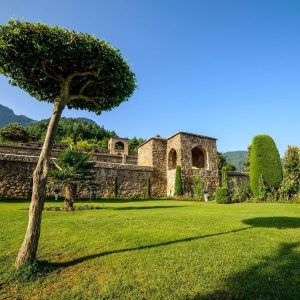
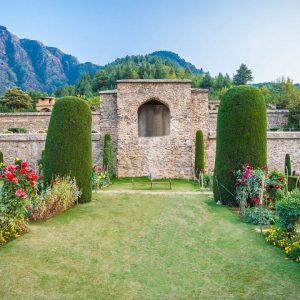
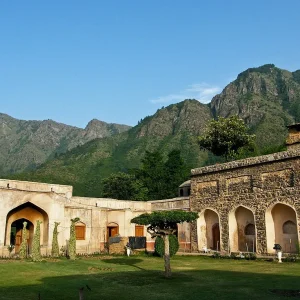

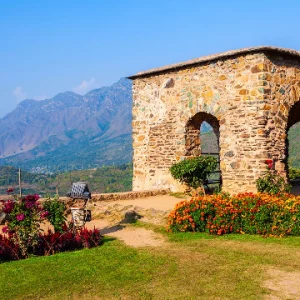
People Also Ask
What is Pari Mahal?
Pari Mahal, also known as the “Palace of Fairies,” is a historical monument located on the western edge of Dal Lake in Srinagar, Kashmir. Built during the Mughal era, it combines Islamic, Persian, and Mughal architectural styles.
Who built Pari Mahal?
Pari Mahal was built by Dara Shikoh, the eldest son of Mughal Emperor Shah Jahan, around the mid-17th century.
Why is Pari Mahal called the ‘Palace of Fairies’?
The name “Palace of Fairies” (Pari Mahal) is believed to come from the structure’s ethereal beauty and its serene location, surrounded by water and lush gardens.
Where is Pari Mahal located?
Pari Mahal is located on the banks of Dal Lake in Srinagar, Kashmir, India. It stands on a hill that offers stunning views of the lake and the surrounding mountains.
What architectural style is used in Pari Mahal?
Pari Mahal features a blend of Mughal, Persian, and Islamic architectural styles, evident in its arches, columns, gardens, and the overall layout.
Is Pari Mahal open to tourists?
Yes, Pari Mahal is open to tourists, and visitors can explore the monument, gardens, and enjoy panoramic views of Dal Lake.
What is the history behind Pari Mahal?
Pari Mahal was built by Dara Shikoh as a summer retreat and place of study. It later became a symbol of Mughal architectural excellence in Kashmir.
How can I reach Pari Mahal?
Pari Mahal can be reached by boat from the nearest boat station on Dal Lake or by road, with a short hike up to the monument from the lake.
What is the significance of Pari Mahal?
Pari Mahal is historically significant for its architecture, serene location, and its association with Mughal royalty. It also symbolizes the cultural blend of Persian and Mughal influences.
Can I take photos at Pari Mahal?
Yes, photography is allowed at Pari Mahal, making it a popular spot for photographers to capture the beauty of the monument and its surroundings.
What are the opening hours of Pari Mahal?
Pari Mahal is generally open to tourists during daylight hours, typically from sunrise to sunset. It’s best to visit early in the morning or late afternoon for the best lighting.
What is the best time to visit Pari Mahal?
The best time to visit Pari Mahal is during the spring and summer months (March to August), when the weather is pleasant and the gardens are in full bloom.
Is there an entry fee for Pari Mahal?
Yes, there is a nominal entry fee for visitors. The fee varies based on local government regulations and may change seasonally.
What other attractions are near Pari Mahal?
Nearby attractions include Dal Lake, Mughal Gardens (like Nishat Bagh and Shalimar Bagh), Hazratbal Shrine, and the Shankaracharya Temple.
What can I see inside Pari Mahal?
Inside Pari Mahal, visitors can explore the intricate arches, carved stone structures, and the well-preserved layout of the Mughal garden. The interior gives a glimpse of the royal Mughal lifestyle.
Is Pari Mahal associated with any legends?
There are various legends surrounding Pari Mahal, with one of the most popular being that it was built as a romantic retreat for Dara Shikoh and his beloved.
How long does it take to explore Pari Mahal?
A typical visit to Pari Mahal lasts around 30 minutes to an hour, depending on the time spent exploring the gardens and taking photographs.
Is Pari Mahal a UNESCO World Heritage site?
While Pari Mahal is a stunning historical site, it is not currently a UNESCO World Heritage site, though it is part of the rich Mughal heritage in Kashmir.
Can I visit Pari Mahal in winter?
Visiting Pari Mahal in winter can be a unique experience, as the surrounding landscape may be covered with snow. However, the weather can be cold, so warm clothing is recommended.
What makes Pari Mahal different from other Mughal buildings?
Pari Mahal stands out due to its location on a hill overlooking Dal Lake, its combination of Persian and Mughal architectural features, and its serene garden setting.
Was Pari Mahal used for anything other than a palace?
In the past, Pari Mahal has been used for various purposes, including as a retreat and a place of study. Over the years, it has also served as a military outpost during the conflicts in the region.
How long did it take to build Pari Mahal?
The construction of Pari Mahal took several years, from around 1648 to 1650, under the supervision of Dara Shikoh and his architects.
Is there any restoration work happening at Pari Mahal?
Occasional restoration work is carried out to preserve the monument’s architectural integrity. Efforts are focused on maintaining the structure’s original features while ensuring its stability.
Are there any nearby hotels or accommodations?
Yes, there are several hotels and guesthouses near Dal Lake and in the city of Srinagar, offering a range of accommodation options for tourists visiting Pari Mahal.
What is the cultural importance of Pari Mahal in Kashmiri heritage?
Pari Mahal holds cultural significance in Kashmiri heritage as a symbol of Mughal influence on the region’s architecture, art, and garden design. It represents the fusion of Persian and Mughal styles and is an iconic landmark in Kashmir’s history.

